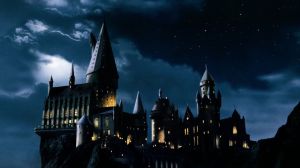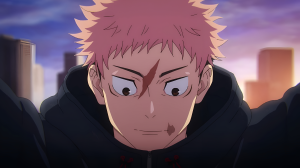
This weekend’s release of Guardians of the Galaxy marks the first time Marvel’s Cinematic Universe has had its visual scope expanded beyond the confines of Earth and into the vastness of the cosmos. This brave new transition will introduce moveigoers to a wide range of Marvel Cosmic concepts that have existed in the comic books for decades – warring alien races, intergalactic defenders, transporting space bases that double as planets, and alternative dimensions.
Videos by ComicBook.com
Marvel’s Cosmic-verse was unofficially created within the pages of Stan Lee and Jack Kirby’s Fantastic Four in the 1960s, which often depicted the “first family” of comics interacting with alien races and visiting the alternative Earth known as the Negative Zone. But Marvel’s larger cosmos really took off in the 1970s as part of the decade’s counter culture movement. Championed by such industry legends as Jim Starlin, Steve Gerber and Steve Englehart, Marvel published a number of cosmic comics that have gone on to become some of the company’s most famous stories.
The foundation for the modern incarnation of the Guardians of the Galaxy can be traced back to the earliest days of the Marvel Cosmic-verse. In celebration of the Guardians of the Galaxy film’s upcoming release, here are 10 of the greatest Marvel Cosmic stories to ever be told.

10. Secret Wars
While Marvel’s first maxi-series is better known for its associated line of action figures rather than its role in the greater Marvel Cosmic Universe, the storyline is filled with wild intergalactic concepts, most notably the demigod, the Beyonder.
The general premise of Secret Wars is that all of Marvel’s A-list heroes and villains are randomly teleported to the mysterious planet of Battleworld, where they fittingly must battle each other to the death for the Beyonder’s enjoyment. But the storyline takes a fun twist when Doctor Doom successfully challenges the Beyonder for his cosmic power, making Doom into an omnipotent being. Doom’s first order of business with the Beyonder’s power is to build a tower to himself that extends for miles into the sky – very fitting for an emperor.
Secret Wars is also famous for introducing the comic book world to an alien symbiote that bonds to Spider-Man creating his black costume. When Spidey later discovers that his costume is a sentient being, he rejects the symbiote, which eventutally finds a home connected to disgraced newspaper reporter Eddie Brock – creating Venom.

9. “The Korvac Saga” (Avengers #167-177)
Considered by many to be the greatest Avengers storyline of all time, “The Korvac Saga” united “Earth’s Mightiest Heroes” with the original Guardians of the Galaxy (from the 31st century) to do battle with the powerful being Michael Korvac. Like the Guardians, Korvac is from the distant future and has traveled back in time (our present) to conquer Earth. The Guardians follow Korvac by traveling back in time themselves, setting up the inevitable showdown.
In the midst of the storyline, old-time Avengers villain the Collector is reintroduced, this time working to save the planet from Korvac. In an absolutely bone-chilling scene, while standing on his space craft, the Collector is incinerated by Korvac, who is sitting in the comfort of his Queens, NY, home.
The final battle between the Avengers/Guardians and Korvac is an epic affair that looks to be a major bloodbath for the heroes before the carnage is ultimately reversed in a bit of deus ex machina courtesy of Jim Shooter’s script.

8. “The Final Threat” (Avengers Annual #7, Marvel Two-in-One Annual #2)
Legendary Marvel Cosmic writer Jim Starlin wrapped up his long-term Adam Warlock/Thanos storyline over the course of two annual issues that also marked the first time the full assembly of the Avengers squared off against Thanos (undoubtedly planting seeds for a future screen adaptation).
The storyline is also a perfect depiction of the insane lengths Thanos is willing to go to impress his mistress Death. This is the arc where Thanos first comes into possession of the six soul gems (that would later make up the Infinity Gauntlet), and the results are not pretty for the Marvel Universe. The first half of the story is a total blood bath, as Warlock, Pip the Troll and Gamora are all killed off by Thanos. The Avengers don’t fare much better against the Mad Titan until Spider-Man of all people shockingly saves the day doing what he does best – throwing his body at a containment chamber holding “Earth’s Mightiest Heroes,” and releasing them to beat up Thanos. Warlock and his soul gem finishes the job and ends the storyline on the iconic image of Thanos encased in stone (that should hold him).

7. Annihilation
This 2006 miniseries by Keith Giffen and Andrea Di Vito (with a host of other crossovers and one shots) is largely responsible for the resurrection of Marvel’s Cosmic line of stories featuring the likes of Nova, Thanos, Silver Surfer, Galactus, Peter “Star-Lord” Quill and Drax the Destroyer. Many of the characters featured and/or reintroduced in the mini and its spinoffs would go on to form Marvel’s reformed Guardians of the Galaxy team in 2008 – the same team that is now getting the film treatment as part of Marvel’s expanding cinematic universe.
The storyline focuses on a group of heroes, led by Nova (Richard Rider) who band together to protect the universe from the Annihilation Wave. Like other cosmic epics that preceded it, Annihilation features a very large cast consisting of various heroes, villains and alien races. Unlike any other cosmic event that preceded it, Annihilation also features Drax the Destroying ripping out the heart of Thanos and (temporarily) killing him.

6. “The Trial of Galactus” (Fantastic Four #242-244, 252-255, 257-262)
In what many consider to be the highlight of John Byrne’s heralded writer/artist run on Fantastic Four in the 1980s, “The Trial of Galactus” is probably one of the most insightful and profound looks at the role the world-devouring Galactus plays in the Marvel Universe. The storyline starts with a weakened Galactus coming to Earth and being defeated by a team of Marvel heroes (including a stunning visual of Galactus falling down). The heroes have the option to just leave Galactus to die, but Reed Richards argues that as do-gooders, they have an obligation to protect a sentient being, even one that poses a threat like Galactus. The decision comes back to haunt Reed when a revived Galactus goes on and devours a Skrull planet, killing billions. Reed is then captured and tried for Galactus’s crimes.
At its core, the storyline is a unique twist on the ecology of the cosmos. Over the course of Reed’s trial, it becomes clear that Galactus, for all of the death and destruction he brings, is a part of the natural order of the universe. To remove him from the equation would set off a chain reaction that could potentially decimate the entire galaxy.
So like death and taxes, the only other guarantee in life is Galactus.

5. The Infinity Gauntlet
Jim Starlin revived a number of forgotten characters from his first run with Marvel in the 1970s – Thanos, Adam Warlock, Gamora, Pip the Troll – to deliver arguably the most popular and important event the company has ever produced. The six issue Infinity Gauntlet miniseries brought the cosmic back to Marvel in a major way. Thanos, the Mad Titan, acquires six “soul gems” that in concert give him an unlimited amount of power. In his first act with the gauntlet, Thanos wipes out half the Marvel Universe with a snap of his fingers. When the surviving heroes confront Thanos, he systematically destroys them all in brutal and horrifying fashion.
While there are some minor contrivances in how the series is resolved, The Infinity Gauntlet is a fan favorite for how it elevates Thanos into one of the deadliest creations Marvel has to offer (not bad for someone who was reportedly based on DC’s Darkseid). It spawned a number of sequels and spin-off series and it is anticipated that the mini will be adapted to some degree for a future Marvel Cinematic Universe film (most likely Avengers 3).

4. “The Dark Phoenix Saga” (X-Men #129-138)
The pinnacle of Chris Claremont and John Byrne’s famed early-80s X-Men run, “The Dark Phoenix Saga” is one of those stories that’s bound to appear on any “greatest” list – cosmic-centric or otherwise. For the remaining few that are uninitiated, the story focuses on original X-Men member Jean Grey who has become overwhelmed by the cosmic force of the Phoenix and goes to the dark side, consuming an entire planet in her Phoenix form and killing billions.
The Phoenix’s existence causes alarm through the galaxy, as a number of races demand that Jean be killed as retribution for her act of genocide. That brings the X-Men to Blue Area of the Moon where they do battle with the Shi’ar Imperial Guard. The storyline ends in shocking and tragic fashion when Jean, sensing the Phoenix force trying to consume her again, commits suicide to save the galaxy from future punishment.
Jean’s death came at a time where major comic book characters were hardly ever killed off – and when they did die, they normally stayed dead.
On a larger cosmic scale, the storyline is a perfect demonstration of how much a beloved Silver Age character could be changed by a corrupting force. As Uatu the Watcher comments on the story’s final page, “Jean Grey could have lived to become a god. But it was more important to her that she die … a human.”

3. “The Kree/Skrull War” (Avengers #89-97)
This 1971-1972 arc by Roy Thomas (with art by from Neal Adams, Sal Buscema and John Buscema) transformed “Earth’s Mightiest Heroes” into the universe’s mightiest heroes when the Avengers have to defend the planet against two warring races, the Krees and the Skrulls. Even by today’s standards, the storyline is remarkably ambitious, weaving in a number of characters, alien races, ideas and concepts. Thomas’s script also made allusions to such political topics as McCarthyism and the House Committee and Un-American Activities.
In terms of its influence on the medium, the “Kree/Skrull War” has been used as a template for other Marvel superhero series featuring intergalactic stories. Beyond the warring alien races, the storyline also features such bizarre but fun stories like Ant-Man exploring the Vision’s internal organs, and superhero sidekick Rick Jones saving the galaxy through the power of Captain Marvel’s Nega Bands. It also marks the foundation for a fan favorite storyline, the romance between Vision and Scarlet Witch.

2. “The Magus Saga” (Strange Tales #178-181, Warlock #9-11)
The mid-to-late 70s marked a time of great transition for Marvel Comics, as Stan Lee operated primarily as a figurehead, opening the doors for a wave of new talent to start crafting some wholly unique storylines. One of the most important creators to emerge from this era was Jim Starlin, who was handed the keys to Adam Warlock – a character that first appeared during the Silver Age run of Fantastic Four before he was transformed in a Christ-like figure by Roy Thomas and Gil Kane in the early 70s. Starlin knew Warlock was not a flagship character for Marvel, which meant editorial was probably not paying attention to what he was writing – opening up a can of worms, while also leading to some of the most mind-blowing comics a person will ever stumble across.
Starlin’s magnum opus with Warlock was the “Magus Saga,” which sees the golden hued warrior align himself with Gamora and Thanos to fight his evil future self, the Magus. These comics are filled with some stunning, conscious-bending spreads (which were penciled by Starlin), along with a story that echoes themes of nihilism, existentialism, atheism, and pretty much any other “ism” someone can come up with.
“The Magus Saga” may be an acquired taste, but it warrants such a high ranking for the way it demonstrates how a cosmic story means more than just new worlds and alien races. The writers working on these stories in the 1970s, wanted their tales to reflect a state of mind and being. These events took place on different planets and timelines because Earth was just too simple and undignified.

1. “The Coming of Galactus” (Fantastic Four #48-50)
This three-part epic from Stan Lee and Jack Kirby may very well be the most important cosmic storyline Marvel has ever produced. It also happens to be the very best story of its kind and quite possibly the greatest arc from Marvel’s iconic Silver Age.
In addition to introducing readers to the planet devouring demigod Galactus and his enigmatic herald Silver Surfer, “The Coming of Galactus” (also known as the Galactus Trilogy) demonstrated that the Marvel Universe stretched well beyond the confines of Earth. The storyline also marked the first appearance/mention of the Negative Zone – a parallel Earth that has played a prominent role in other Marvel Cosmic storylines such as the “Kree/Skrull War.”
Lee and Kirby’s Fantastic Four had always been “ground zero” for Marvel’s zany cosmic movement, but the elegance and maturity in the way “The Coming of Galactus” was composed was absolutely groundbreaking for its time. The story of an alien force looking to feed off the Earth’s energy and natural resources was unquestionably an allegory for the state of the world in the mid-1960s – a time of great political and civil unrest and uncertainty. As a result, every page reads with the utmost urgency and importance. Hardly a panel feels wasted. It’s a master class in storytelling and undeniably a tale that has served as a model for nearly every other Marvel Cosmic story to follow.








